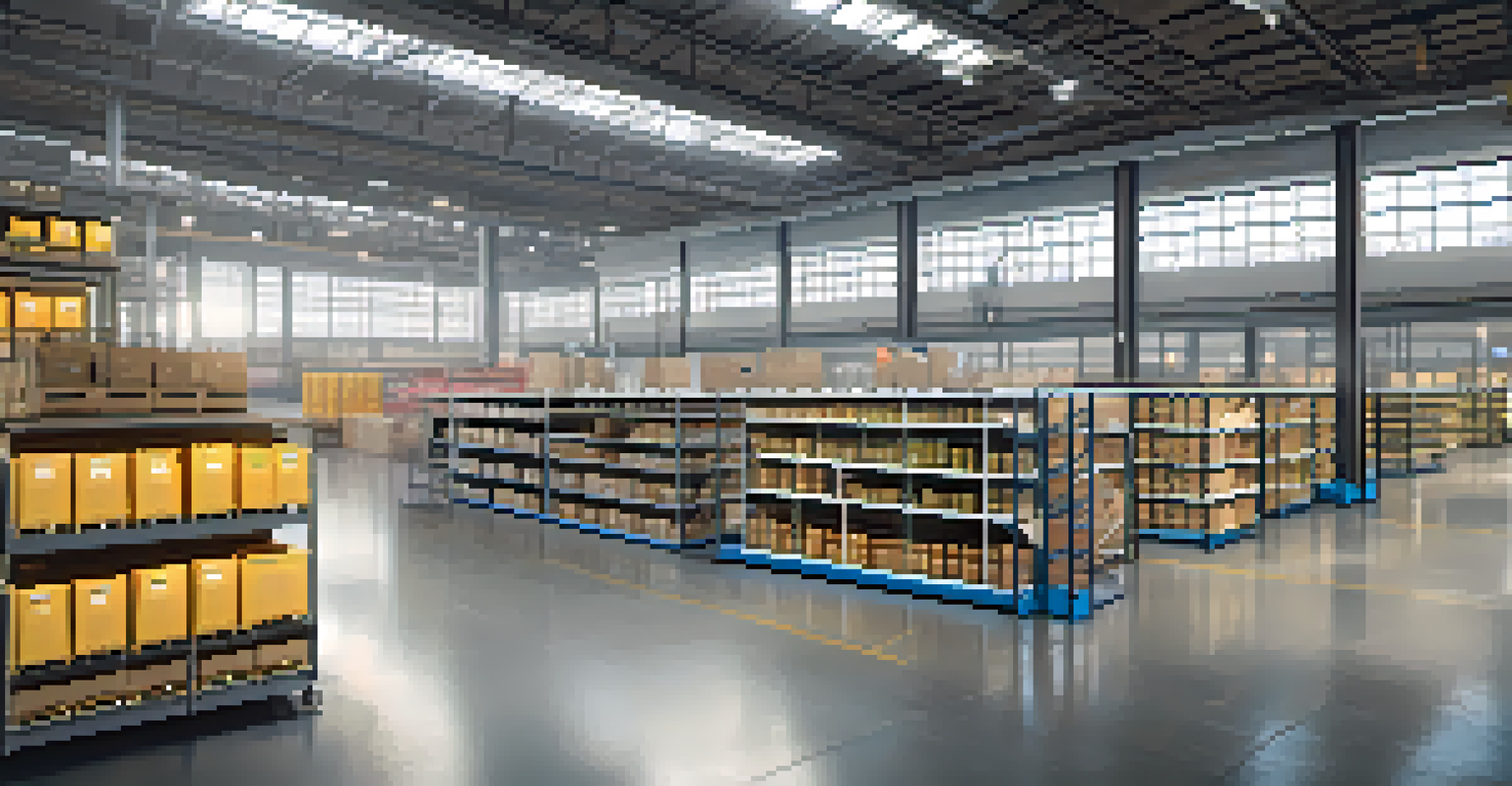Blockchain and IoT: A Powerful Supply Chain Combination

Understanding Blockchain and IoT Basics
Blockchain is a decentralized digital ledger that records transactions across many computers. This technology ensures that once a transaction is recorded, it cannot be altered without the consensus of the network. IoT, or the Internet of Things, refers to the interconnection of everyday devices to the internet, enabling them to send and receive data.
Blockchain technology is a revolution in the way we think about trust and transparency in transactions.
When combined, Blockchain and IoT can create a more secure and efficient supply chain. For example, IoT devices can gather real-time data about products, such as location and condition, while Blockchain can securely store this information. This synergy enhances traceability and accountability in supply chains.
In essence, understanding these technologies is the first step toward leveraging their potential. As companies begin to implement them, the possibilities for improved operations become clearer.
Enhancing Transparency in Supply Chains
One of the primary advantages of integrating Blockchain with IoT is the boost in transparency. Blockchain allows all parties in the supply chain to access the same up-to-date information, reducing misunderstandings and disputes. For instance, if a product is delayed, everyone involved can see the exact reason and location in real-time.

This transparency is crucial for building trust among stakeholders. When suppliers, manufacturers, and retailers can track each item through the supply chain, it fosters collaboration and reduces the risk of fraud. Imagine a coffee producer knowing exactly where their beans are at every stage of the process.
Blockchain Enhances Supply Chain Transparency
Integrating Blockchain with IoT boosts transparency, allowing all parties to access real-time information, which fosters trust and reduces disputes.
As transparency increases, so does accountability. Companies can quickly identify issues and rectify them before they escalate, ultimately leading to better customer satisfaction.
Boosting Efficiency with Real-Time Data
In today's fast-paced market, efficiency is key. IoT devices can monitor products and conditions continuously, providing real-time data that helps organizations make informed decisions. When this data is recorded on a Blockchain, it ensures that the information is immutable and securely stored.
The Internet of Things is not a thing; it’s a network of things, and it’s changing the way we live and work.
For example, a temperature-sensitive shipment, like pharmaceuticals, can be monitored via IoT sensors. If the temperature rises above a certain level, immediate alerts can be sent out, and the data is recorded on Blockchain for future reference. This not only helps in rectifying issues promptly but also protects product integrity.
By streamlining operations through real-time insights, companies can optimize their supply chains, minimize waste, and reduce costs.
Strengthening Security Across Supply Chains
Cybersecurity is a growing concern in supply chains, as more devices connect to the internet. Blockchain offers a robust solution by providing a secure way to record transactions and share data. By using cryptographic techniques, Blockchain ensures that only authorized parties can access sensitive information.
Consider a scenario where a shipment is hijacked or tampered with. With Blockchain, all changes to the shipment's status are recorded, creating a detailed audit trail. This traceability can deter theft and fraud, as it becomes evident when and where an issue occurred.
Real-Time Data Boosts Supply Chain Efficiency
IoT devices provide continuous monitoring and real-time data, enabling companies to make informed decisions and streamline operations.
Thus, the combination of Blockchain and IoT not only enhances operational efficiency but also significantly reduces security risks.
Improving Product Traceability and Recall Processes
Product traceability is essential, especially in industries like food and pharmaceuticals. Blockchain’s ability to provide a complete history of a product's journey ensures that companies can quickly locate and address issues. This is particularly useful during product recalls, where knowing the exact location and batch of affected products can save lives.
For instance, if a batch of contaminated lettuce is discovered, Blockchain allows for swift identification of where the lettuce was distributed. IoT devices can monitor where the product has been, ensuring that only the affected items are recalled.
This level of traceability not only protects consumers but also enhances a company's reputation, demonstrating their commitment to safety and quality.
Lowering Operational Costs with Automation
Integrating Blockchain and IoT can lead to significant cost savings through automation. By automating processes like inventory management and order tracking, companies can reduce the need for manual oversight. This not only cuts labor costs but also minimizes human error.
For example, smart contracts on the Blockchain can automatically execute transactions when certain conditions are met, streamlining operations. If a shipment reaches its destination, payment can be released automatically without manual intervention.
Improved Traceability Ensures Product Safety
Blockchain's ability to track a product's journey enhances traceability, making it easier to manage recalls and protect consumer safety.
As a result, businesses can allocate resources more efficiently and focus on strategic initiatives rather than routine tasks.
The Future of Blockchain and IoT in Supply Chains
As technology continues to evolve, the integration of Blockchain and IoT in supply chains is likely to grow. Companies are increasingly recognizing the potential benefits, leading to more innovative applications. From smart warehouses to automated delivery systems, the future holds exciting possibilities.
For instance, we may see the emergence of fully autonomous supply chains where decisions are made in real-time based on data collected by IoT devices, all secured by Blockchain technology. This could revolutionize the way goods are produced and delivered.

Moreover, as more businesses adopt these technologies, we can expect enhanced standards and regulations, further driving industry improvements.